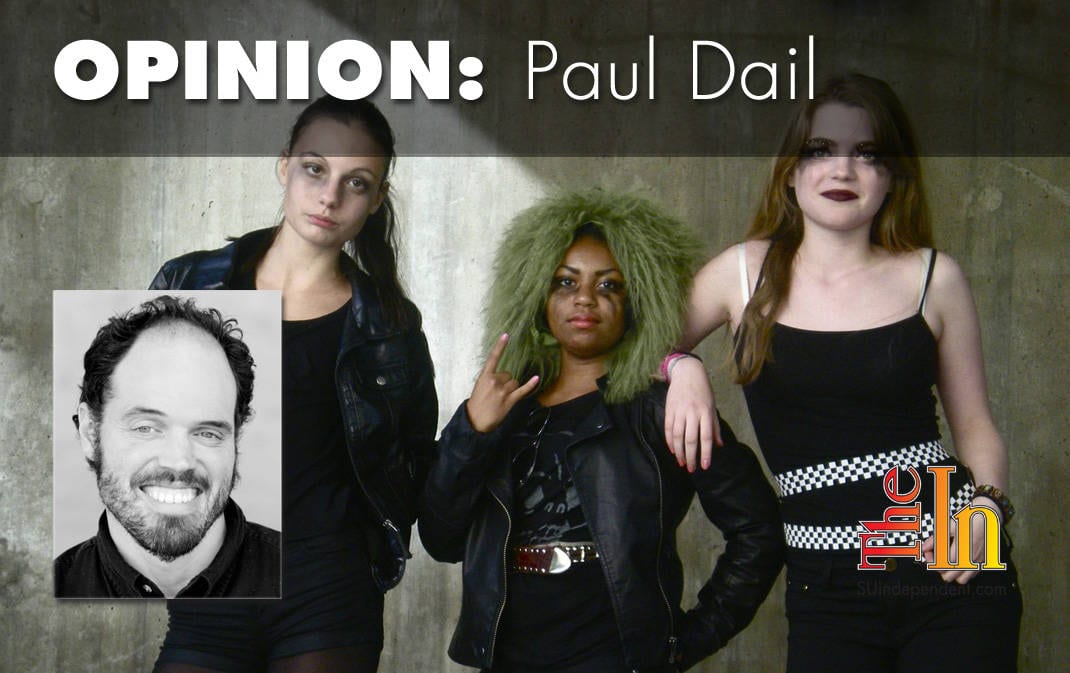 Recently the issue of school uniforms and dress codes came to the public’s attention when a Native American second grader at Arrowhead Elementary in Washington County was sent home after showing up to school with a Mohawk. The administration claimed this didn’t follow suit with their school dress code, which, while not exactly specifying hair length, does state that appearance choices that may be considered “distracting” are a violation of the school dress code. That particular issue has since been resolved, but the topic brought out those on both sides: those who are defending school uniforms and dress codes and those who oppose them.
Recently the issue of school uniforms and dress codes came to the public’s attention when a Native American second grader at Arrowhead Elementary in Washington County was sent home after showing up to school with a Mohawk. The administration claimed this didn’t follow suit with their school dress code, which, while not exactly specifying hair length, does state that appearance choices that may be considered “distracting” are a violation of the school dress code. That particular issue has since been resolved, but the topic brought out those on both sides: those who are defending school uniforms and dress codes and those who oppose them.
As a former high school teacher who taught at a school with uniforms, I am not only here defending school uniforms and dress codes; I am outright singing their praises.

However, before I go on to address this topic with broad strokes, let me address the most recent situation. When it comes to the second grader with the Mohawk, I think blame should be spread around equally.
Did the Washington County School District err by not making their policy clear enough and defining exactly what they meant by “distracting”? You bet. If they didn’t want Mohawks, they should’ve specified they didn’t want Mohawks. Simply prohibiting “distracting” clothing is not acceptable.

However, did the parents also err in getting their child’s hair cut that way (and let’s be honest, it really was something the parents were doing; the child didn’t drive himself and pay for his haircut)? Again, yes. Culture aside, if you think there is even a possibility that a school dress code might prohibit something you are doing with your child’s appearance, before doing it you check with the school that is more or less offering your child a free public education.
Okay, now for those broad strokes. I’ll start with the easy one in my book.
Defending school uniforms:
Besides good teachers—and you know, paying them what they’re worth—school uniforms are one of the best ways to facilitate an education, both in the classroom and on the bigger scale. At least a junior high or high school education. I know, that’s a pretty bold statement. Let me qualify it.
First, let’s go ahead and talk about those pesky distractions. The school where I taught allowed students to periodically have “casual dress” days where students were allowed to doff their uniform in favor of their “normal clothes.” Most teachers hated those days because suddenly, clothing took precedence over anything else going on in the classroom.
Then there’s the fact that the clothes many kids choose to wear are just too revealing, especially the girls. School uniforms fix that problem. Before everyone jumps down my throat and brings up the #IAmMoreThanADistraction movement, let me explain. When you have a girl in a tank top with her bra showing or high cut shorts with her butt hanging out, that is a distraction to a teenage boy. I completely agree that we need to teach boys respect instead of making girls feel ashamed of their bodies, but there’s only so much you can say to a teenage boy before you run into the stark reality of hormones. They may be listening to you and really trying, but what you say doesn’t matter much when it comes to rampant hormones which overrule logic.
Try telling a premenstrual or pregnant woman to not to be grumpy or have mood swings. Let me know how well that works… once you have removed her foot from your ass.
But what is perhaps most important to me—and this is what I always told my students on the first day of school when I was defending school uniforms—is that school uniforms put everyone on the same level. At least at the beginning. It’s human nature—especially teenage human nature—to eventually find out how much money someone has or doesn’t have, where they live, where they come from, what their parents drive, and so on, but at least at the beginning, school uniforms makes you get to know a person based on who they are, not what they’re wearing.
Defending school dress codes:
Defending school dress codes is a little harder than defending school uniforms, because as I stated earlier, many dress codes just aren’t specific enough. Besides, “distracting,” a quick look at the Washington County School District dress code offers up several words like “neat,” “clean,” “immodest,” “extreme,” and “safe.” Just as parents who have read about the second grader at Arrowhead Elementary have stated, these words are clearly open to interpretation.

Granted the school district does have specific details in its school dress code, things like skirt and short length, no bare shoulders or exposed underwear, nothing advertising illegal substances, and no gang clothing (which was actually the only form of school dress codes I remember from my younger years growing up just outside of Atlanta), but kids will find ways around even those school dress code regulations.
They wear coats or hoodies in class to cover up clothing that they will later be sporting everywhere else on campus. They play teachers against each other (“Well, Mr. So-and-So didn’t tell me I couldn’t wear it”). They pull up pants, tug down shorts, and take out nose rings when teachers are around. Suddenly those teachers who believe dress codes are worth defending become put in the unfortunate role of having to be the fashion police.
Should I tell you again how easy defending school uniforms is for me? It solves most of these problems. Not all of them, mind you, but many of them.
I understand that individuality is important, but here’s the thing: Most of what your kid wants to wear isn’t really that individual. Look at their peers. Or if they don’t dare let you see them around their friends, go to a mall and look for the packs of kids. Typically they aren’t all individuals. It’s about fitting in.
Next they will tell you they aren’t allowed to express themselves. Really? Self-expression is being a walking billboard for Abercrombie and Fitch, Hollister, or American Eagle? If you want to teach your children a lesson, teach them they aren’t defined by their appearance. Sure we all have clothes that we like, clothes that we feel good in, clothes that we think make us look good, but that’s not the same as how we express ourselves. We are who we are based on how we act or treat others. That’s where we define ourselves, and it has nothing to do with appearance.




Nailed it, Paul. I wish I had a penny for every conversation I had with a parent who tried to defend what his or her student was wearing in my classroom. Many of them simply don’t understand the distractions that come along with immodest or otherwise inappropriate clothing. I only taught 3 years in a school with uniforms, but those were three very stress-free years in terms of discipline in my classroom. As you said, uniforms are the ultimate equalizer, and they made my classroom management issues so much easier. My daughters attend a high school with uniforms – and hate it – and I smile every day when I see then leave the house looking line twins. Thanks for another great article!
I think you’d be surprised at the number of students who, if being totally honest , would agree with you. I went 12 years to schools with uniforms. While I complained along with all my friends, I actually loved it. I was happy not to worry about what I wore each day and whether or not it was “cool” enough.
School (K -12) is a place where young people go to learn about democracy, not practice it. Given the uniform, they can express their individuality and creativity through their thoughts, words and actions rather than their adornment. If scientific evidence supports uniforms as fostering an improved teaching and learning environment, then bring them on.
Typically there is not one word here about boys ‘distracting’ girls with their appearance. Until you realize your bias you’ll never win this argument. We’ve spent decades demanding that girls be modest, it’s time to specify what we want boys to do–or not do. When we treat boys equally we enforce the right messages about women’s equal role in society.